Research and Conservation in Southern Sonora, Mexico
Foothills Thornscrub Gallery
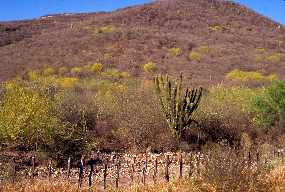
|
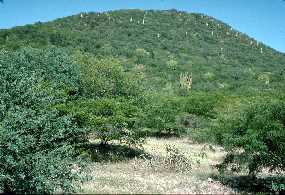 |
| Foothills thornscrub on Cerro Prieto near Navojoa, Sonora. Left: dry season (April); right: summer rainy season. The yellow trees in the left image are palo verdes (Parkinsonia praecox and a few P. florida). The foreground cactus in both images is etcho (Pachycereus pecten-aboriginum). Most of the emergent cacti on the hill are sahuaros (Carnegiea gigantea); this site is near the southern limit of their range. Photos: Mark Dimmitt |
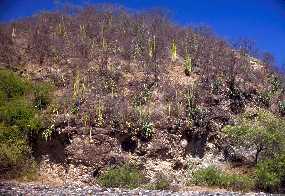
Foothills thornscrub near Guajaray, Sonora. Thornscrub looks nearly like desert during the dry season, only the vegetation is denser. Recognizable plants in this image are organ pipe cactus/pitahaya (Stenocereus thurberi) and amole (Agave vilmoriniana). Photo: Mark Dimmitt |
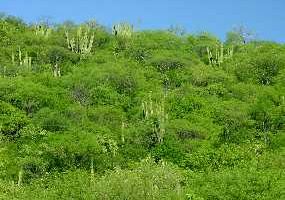
Foothills thornscrub northeast of Ciudad Obregon, Sonora. Thornscrub looks like tropical forest during the rainy season. The emergent etchos distinguish it from tropical deciduous forest. Organ pipe cacti are also present, but the smaller plants are nearly concealed by the foliage. Photo: Mark Dimmitt
|
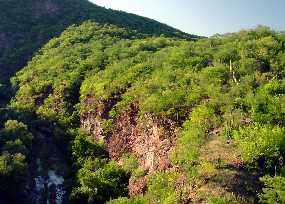
Foothills thornscrub northeast of Ciudad Obregon, Sonora. Photo: Mark Dimmitt |
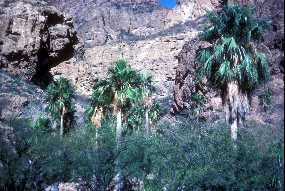
Foothills thornscrub can occur near the coast in hilly terrain. Nacapuli Canyon, Sierra del Aguage, Guaymas, Sonora. The palms are Brahea brandeegei. Photo: T.R. Van Devender |
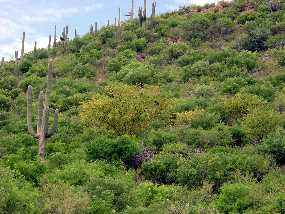
The plant diversity in foothills thornscrub becomes more depauperate in the northern extent of its range, as this hillside east of Magdalena, Sonora. The dominant shrub is samota (Coursetia glandulosa); the only columnar cactus is sahuaro. The yellowing shrub in center is tree ocotillo (Fouquieria macdougalii). Photo: Mark Dimmitt |
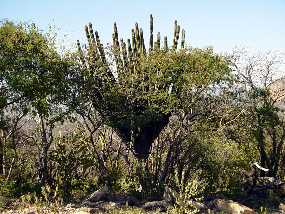
Foothills thornscrub in the Sierra de Mazatán, Sonora, with a large etcho. Photo: Cory Martin |

Foothills thornscrub in the Sierra Libre northeast of Guaymas, Sonora. The treelet is palo blanco or palo liso (Acacia willardiana (palo blanco). Also visible are a maguey (Agave colorata) and Hechtia montana (right foreground). Photo: Mark Dimmitt |
|